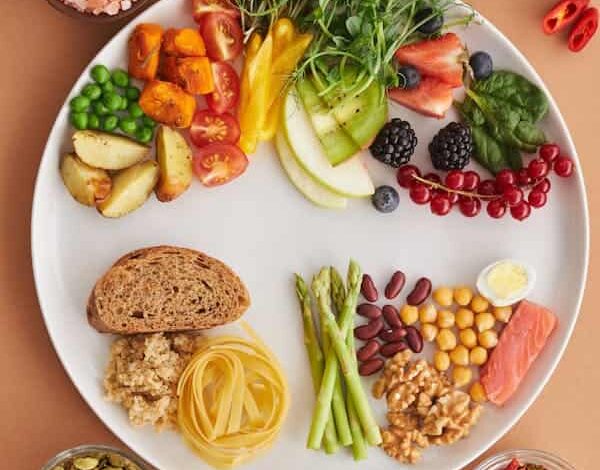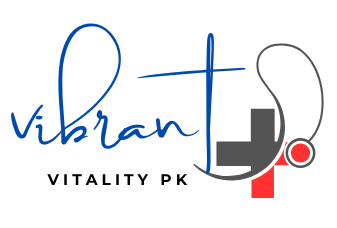5 Downsides of the Vertical Diet: Unlocking the Secrets to Nutritional Success
vertical diet

A vertical diet, also known as a ketogenic or vegan diet is a type of low-carbohydrate diet that restricts carbohydrates to foods high in fat.
The vertical diet concept first introduced by an elite power lifter named Stan Efferding for athletic performance enhancement. Vertical diet emphasizes upon limited healthy and nutritious food choices in comparison with horizontal diet plans.

Vertical diet can be considered an alternative to traditional low-carbohydrate diets because it allows individuals to consume the same amount of food without having to limit their carb intake.
However, vertical diet does have its drawbacks. For one, it might not be suitable for people with certain health issues or concerns, such as diabetes or epilepsy.
Additionally, some studies have suggested that the vertical diet may be more difficult than other types of diets to maintain long-term. In order to help ensure that this diet is appropriate for all, it’s important to understand what it is and how it works.
Foods included in vertical diet plans
There are a lot of different diets out there, and one popular option is the “vertical” diet. This diet plan requires people to eat mainly from their stomachs, restricting what they eat to only the top four inches of their body. They can also do it at home through a hospital bed or in the office in a cubicle.
One thing that sets this diet apart from other plans is that you’re allowed to drink liquids, but no alcohol.
So if you’re worried about your blood alcohol content (BAC), then this might not be for you. Another benefit of this is that there’s plenty of research backing up the fact that this diet can be effective in burning off excess fat and lowering your risk of certain diseases.
The main difference between the Vertical Diet Plan (VDP) and most traditional diets is that you’re able to consume food from all parts of the body, including your hands and feet. The VDP also includes lots of vegetables and whole grains on its plate, as well as lean protein to bulk up the meal.
As with any dietary program, having your meals controlled by nutritionists or certified personal trainers can help ensure that you’re getting everything you need in each and every bite. You can choose to go through many different variations of the VDP, so there’s something for everyone. Some examples include:
The Vegetarian Meal Plan – This is an excellent choice if you want to cut down on meat consumption. It recommends eating mostly plant-based foods and eliminating animal products altogether. Meat is recommended in moderation, however.
The Vegan Meal Plan – This plan eliminates meat completely and focuses on low-fat vegan options. Vegetables and whole grains are encouraged, along with healthy fats like nuts and seeds.
The Weight Loss Plate – This plan suggests following a strict 5,000 calorie/day diet, which means eating around 2,000 calories per day. People following this plan should aim to reduce their caloric intake by 25% compared to a more standard American diet. This will mean consuming fewer unhealthy snacks, such as chocolate and cookies.
The Mediterranean Meal Plan – This includes fruits, vegetables, grains, healthy fats and healthy proteins such as fish, beans, legumes and soybeans. It’s similar to some versions of the VDP, but has slightly higher amounts of carbs. Instead of drinking juice, it encourages taking in fresh food, such as fruit and vegetables.
Overall, the VDP is based on science and backed up by research studies, making it an ideal option if you’re looking for quick results. Many people find success with this type of diet because it provides you with all the necessary nutrients and vitamins to start building a strong immune system and lose weight quickly.
Vertical diet may have certain serious drawbacks as well. For example, it may be hard to stick to it when you’re busy, as you may eat less than you would if you were fasting. If you’re interested in trying this diet out, make sure that you consult with a licensed health care professional before starting.
In addition to these options, there are two others that are often used by those who follow the vertical diet. These are called Eat & Drink (EDM) and Eat & Drink Only (EDO).
EDO is where you’re only allowed to take in nutrient-dense foods, while EED is where you’re only allowed to take in nutrient-dense drinks. The latter diet is designed specifically for vegetarians and vegans, and can be very restrictive for those who rely heavily on dairy products. When it comes to both types of menu items, it’s important to choose a variety of foods and drinks that meet your specific needs.
Finally, it’s worth addressing another potential downside of this diet plan, which is the lack of exercise. While the majority of people in the United States get some form of regular physical activity, few people following the vertical diet plan actually engage in vigorous exercise. Instead, they focus on high-intensity aerobics, yoga and Pilates.
Which foods options vertical diet permits or avoid?
Vertical diet has numerous food choices but there are certain foods which should be avoided. The details regarding food to eat or not to eat are as follows:
| Foods to Eat | Foods which should not to eat |
| Rice | Pasta and bread |
| Potatoes | White flour |
| Red meat | Brown rice |
| Fruits | Peas and peanuts |
| Eggs | Highly processed vegetables oils like canola and soybean and corn |
| Sodium | Garlic and onions |
| Dairy | Broccoli and Brussels |
| Fatty fish | Cabbage and asparagus |
| Poultry | Candies, coffee and soda |
| Oats and legumes | Pastries and baked food items |
| Oils and fats |
What are downsides of Vertical Diet?
Apart from numerous health benefits vertical diet plans are not out of dangers. Here are some potential drawbacks arise from vertical diet plans like:
- It is low in prebiotics which directly impacts friendly gut bacteria which may disturb gut health. Abstinence from dietary fibers foods like onion, garlic and barley has serious consequences.
- Due to least food options it may become really difficult and least attractive to follow. This fact makes it even less nutritious as well.
- It’s also low in fibers which affect heart health, digestive system health and fullness temptations. Therefore, it may lead towards diabetes and even cancer.
- It may also become expensive to eat and follow which make it less attractive for low resource people.
- As vertical diet focus on red meat options and discourage most of the grains, legumes and limit vegetables therefore it may prove inappropriate for vegans.
What is A Keto Diet and Why Does It Work?
A ketogenic diet is an eating plan that incorporates fat, proteins, and moderate amounts of protein and low levels of carbohydrates. Ketones are products of metabolism that occur when carbohydrates are broken down into simpler molecules called sugars through chemical reactions inside the body.
They are typically associated with a state of metabolic dysfunction. When carbohydrates are consumed in excess, they create a surplus of energy that must be released through physical activity.
By consuming a diet rich in fats, protein, and fiber, blood sugar is stabilized while also improving overall health. Because the body needs energy from carbohydrates to function properly, the body can enter into a state of “starvation” where the body stops making use of glucose (blood sugar) for energy.
As a result, body cells cannot utilize the glucose they make for energy, leading to fatigue, lack of appetite, and/or irritability. By consuming foods that are naturally high in fats, including avocados, nuts, seeds, and fatty fish, the body can access the necessary calories to fuel its metabolism and prevent hunger.

Why A Low Carb Diet Is Called A ‘Ketogenic’ Diet?
A ketogenic diet may be thought of as a “keto diet” when compared with a standard low-carb diet due to the fact that both types of diets restrict carbs to a limited number of foods. A typical low-carb diet will include many foods that are high in carbs (such as bread, pasta, soda), but are otherwise very similar to those found in a diet that contains a lot of protein.
The main difference between a ketogenic diet and a typical low-carb diet lies in the degree of carbohydrate restriction. While a low-carb diet would probably allow you to eat more than one kind of starchy vegetable per day, including leafy greens, root vegetables, and cruciferous vegetables, a ketogenic diet would only allow you to eat about half of these types of foods. Other types of starchy vegetables are available in moderation, but are still high in carbs.
Additionally, a typical low-carb diet won’t allow you to eat any dairy products. Instead, you can only consume eggs, meat, or seafood if you do so within your own personal boundaries. On the other hand, a ketogenic diet restricts the consumption of most animal products, which is why it’s sometimes referred to as a ‘vegan’ diet.
In addition, a ketogenic diet is often more restrictive than a low-carb diet, which means that the latter is less likely to be sustainable over time. Some examples of foods that people with the ketogenic diet might enjoy include:
Fatty meats – Meat is generally high in carbs, but there are some exceptions to this rule; namely salmon, poultry, turkey, beef, and pork, among others. Fatty fish – Salmon, tuna, and sardines are good sources of omega-3s, which can support heart health.
Legumes – Legumes (beans, peas, lentils, chickpeas, kidney beans, and green beans) are high in fiber and protein, and can be a great way to get enough plant-based protein in your diet.
Dark chocolate – Chocolate is high in fat, sugar, and added ingredient cacao, which can cause obesity. Dark chocolate is better suited to being eaten by children under 12 years old; however, adults should consider consuming it in moderation.
Nuts – Nuts are good sources of vitamin E, magnesium, and other nutrients that contribute towards healthy skin and eye health.
Whole grains – Whole grain meals can provide a source of complex carbs while keeping you satisfied throughout the meal. Consuming whole grain foods like brown rice, quinoa, oats, barley, and wheat germ can give you more fiber and lower levels of sugar.
How to Find a Food List That You Like!
Many healthy recipes are easy to follow, but following a strict diet isn’t always as simple as it seems. Fortunately, there are plenty of resources online that can assist you in finding tasty and satisfying options. Here are a few general rules to follow to find healthier options:
Eat Moderately – Try to consume smaller quantities of each food type with a larger total volume per meal instead.
Eat frequent meals – Filling up on large amounts of food at once will lead to overeating later. Aim to have frequent meals (three to five times per week) that offer variety and can be enjoyed in different ways.
Eat slowly – If you’re working towards weight loss, it’s best to avoid eating quickly and then taking full advantage of a slow release of the food after it has been consumed. Slow eating helps to promote feelings of satisfaction and reduces cravings.
Find out what a ketogenic diet is, why it exists, and how it compares to other popular diets. Then you’ll know exactly what it is that you need to follow to stay on track. Now, let’s see that ketogenic diet and get ready to live a happy life!
Conclusion
In conclusion, the vertical diet is a great option if you want to lose weight quickly and without compromising your nutritional needs. With careful consideration and a little bit of planning, you can enjoy delicious, nutritious meals and still stay active. Just make sure that you consult with a qualified healthcare professional before beginning the journey.
FAQs
What is vertical diet?
A vertical diet, also known as a ketogenic or vegan diet is a type of low-carbohydrate diet that restricts carbohydrates to foods high in fat.
Who first introduced vertical diet?
Stan Efferding
Is it beneficial in long run?
Yes, but expert’s advice should be considered.






